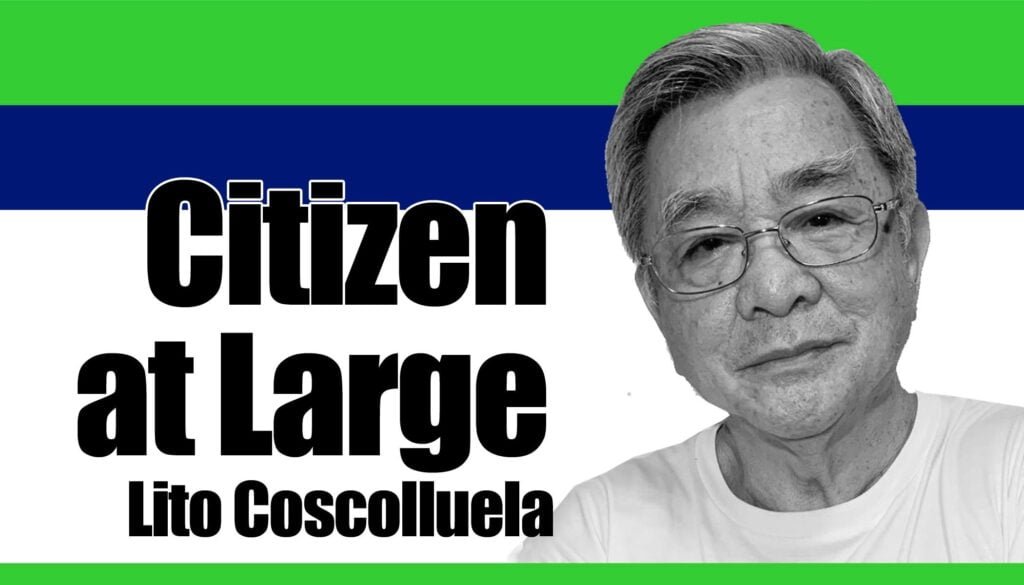
We are commemorating the International Day of Education on January 24. There may not be much to celebrate at this time, given the severe disruption caused by the Covid19 pandemic and what may be a “lost year” for many underprivileged or underserved children. But I am getting ahead of the story.
A few days ago, I got a text message from someone who called me maninoy. We’ll call him Rex. He introduced himself as the son of someone I knew and he very simply asked me to help him find a job. I asked what kind of job he was looking for, and he said anything because he had only finished third year high school.
I told him to consider finishing high school first, then get some higher education (or skills training). His answer was heartbreaking. Ga obra lang ko sa campo, maninoy” (I’m just a farm laborer) may bata na ko (I already have a child) kag wala na si Nanay kag Tatay” (and my parents are gone). He apparently gave little thought to ever improving his lot through education; he just wanted a better job in a nearby sugar mill. With no more than a third year high school education, what possible future could this young man (and his children) have?
The Philippines has many excellent schools – both private and public – that produce educated citizens. But our problem is not in the schools of higher education; our problem is getting every Filipino child to finish basic education (K-12) and making sure it is quality education they get, the kind of education that gives them the right skills and values to become productive and responsible members of society. And as we pointed out in a previous article, there are huge challenges that need serious attention, adequate funding and responsive policy reforms before we can claim to be a nation of well-educated people.
In truth, we are failing many of our Filipino children. Like Rex, he with the disrupted education and now an adult with a dim future.
Grim Indicators
As I wrote earlier, tests show that Filipino students have the lowest IQ (86) among Asian peers, and rank at the very bottom among close to 90 countries in terms of competencies in Math, English and Science. The rising incidence of malnutrition (up to 31 percent) – especially for children below five years old – also raises the specter of children growing up physically stunted and intellectually handicapped. If you’re looking for poverty traps, look no further.
What does this mean? We have two kinds of Filipinos – the “privileged” and the not so. Equitable growth and inclusive development are meaningless to Filipinos like Rex and the many others who are being left behind.
Grappling with today’s problems to forge a better future
A few months ago, former DepEd USec. Mike Luz talked about the need to address three disruptions encountered by our basic education system, namely: a) the postponement of classes due to the pandemic, b) the shift to distance learning, on line or blended, and c) the disruption at home as families (especially working parents and students who do not have circumstances conducive to self-learning) try to cope with “the new normal”.
Luz spoke not only of the immediate challenges but also about the changes forced on the system over a longer period of time. The new schoolyear is just the beginning.
The short-term challenge (2021-2022) will involve developing new schooling practices to adapt to the new ways. The medium term (2022-2025) will call for “structural reforms to address long-term realities” such as a move to smaller class sizes to allow for distancing, and therefore requiring more classrooms that are differently-designed and more teachers and bigger budgets. And this means changes in the way schools are organized and run.
Mike has a list of “things to begin thinking about”. Among these are: How large (or small) should class sizes be? How large should elementary and high schools be? How many more schools or new classrooms will be needed?
How can the now under-utilized capacities of private elementary and high schools be optimized to help address the shortage?
What kind of health and safety facilities should be built into every school? This is especially worrisome when one realizes there are many public schools with no water and limited sanitation facilities.
What practices will become the norm? What will all this mean in terms of numbers and costs to provide quality (and safe) basic education to our children?
To give the reader an idea, former USec. Luz estimates that over a period of five years, we will need to build 10,000 new schools (2,000 every year) and hire 200,000 new teachers (40,00 per year), accompanied by a massive teacher training program using Teacher Education Institutes or training centers. Existing public schools, by the way, would have to be redesigned or retrofitted to meet new requirements and standards.
The same attention is needed as well for Special Education, Non-Formal Education and skills training. All this would mean huge investments in education and human resource development so that no more Rexes get left behind.
Coupled with increased spending for health and social services (what Mike calls “Social Sector Build-Build-Build”), the impact on the economy (localized infrastructure spending, employment generation through training and hiring of new teachers) and positive long-term social outcomes will have more far-reaching contributions to the building of a nation than many of the programs government currently spends on. All we need to get this done is for someone at the top to pay attention.
Notes: Those who want to get more insights on education can look up the articles of Juan Miguel Luz on Rappler (Analysis). He also posts articles on Facebook. There are inspiring stories too on education programs initiated by Synergeia Foundation and many local government units led by education-minded Mayors. We hope to write about them soon.
Disclosure: This writer is a member of the Board of Trustees of Synergeia Foundation, a not-for-profit private organization dedicated to pursuing education reform in partnership with Regional Education councils (REC), Local School Boards, School Governing Councils, Teachers and Parents – NWI




